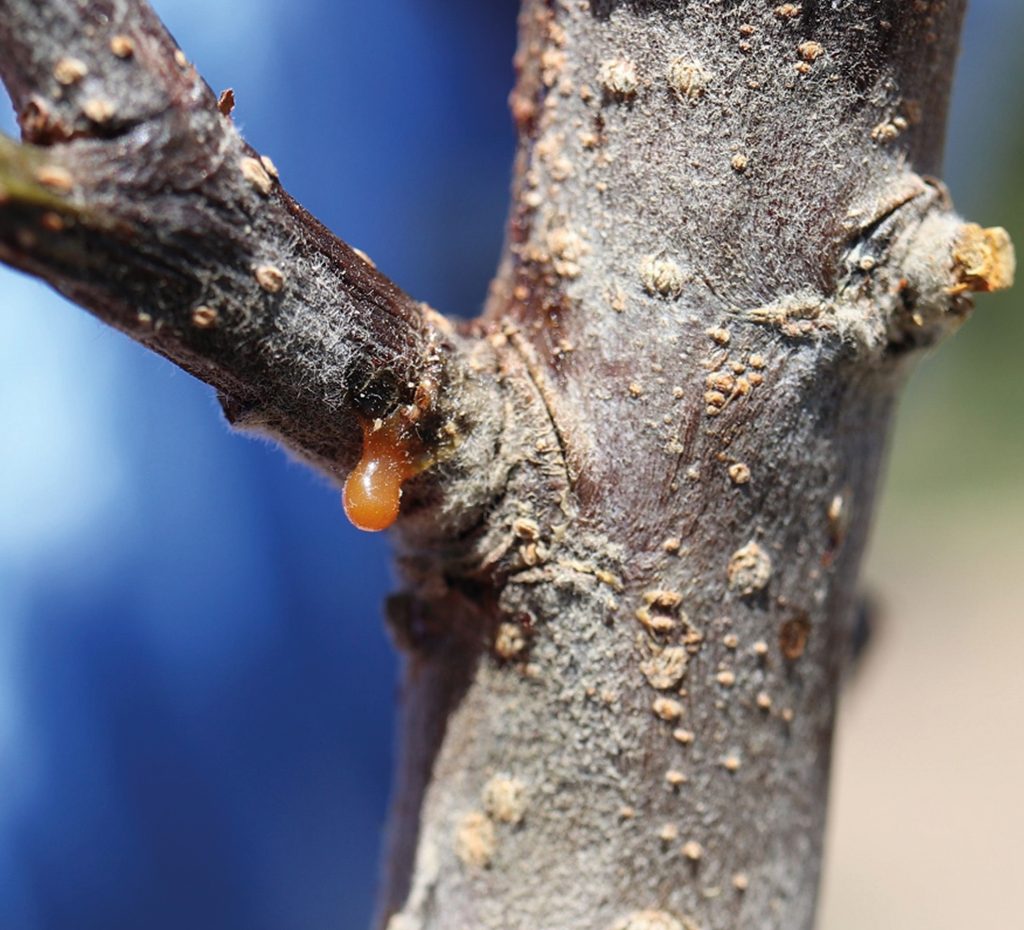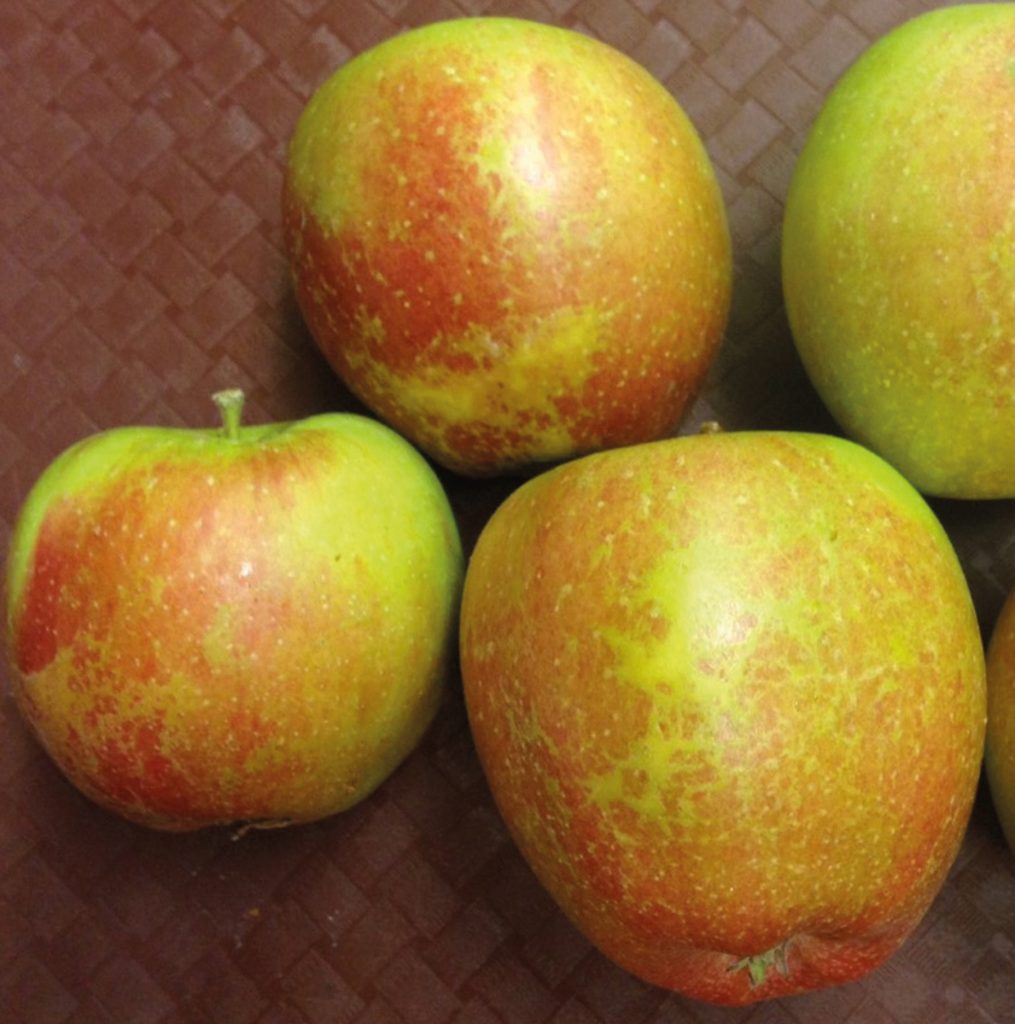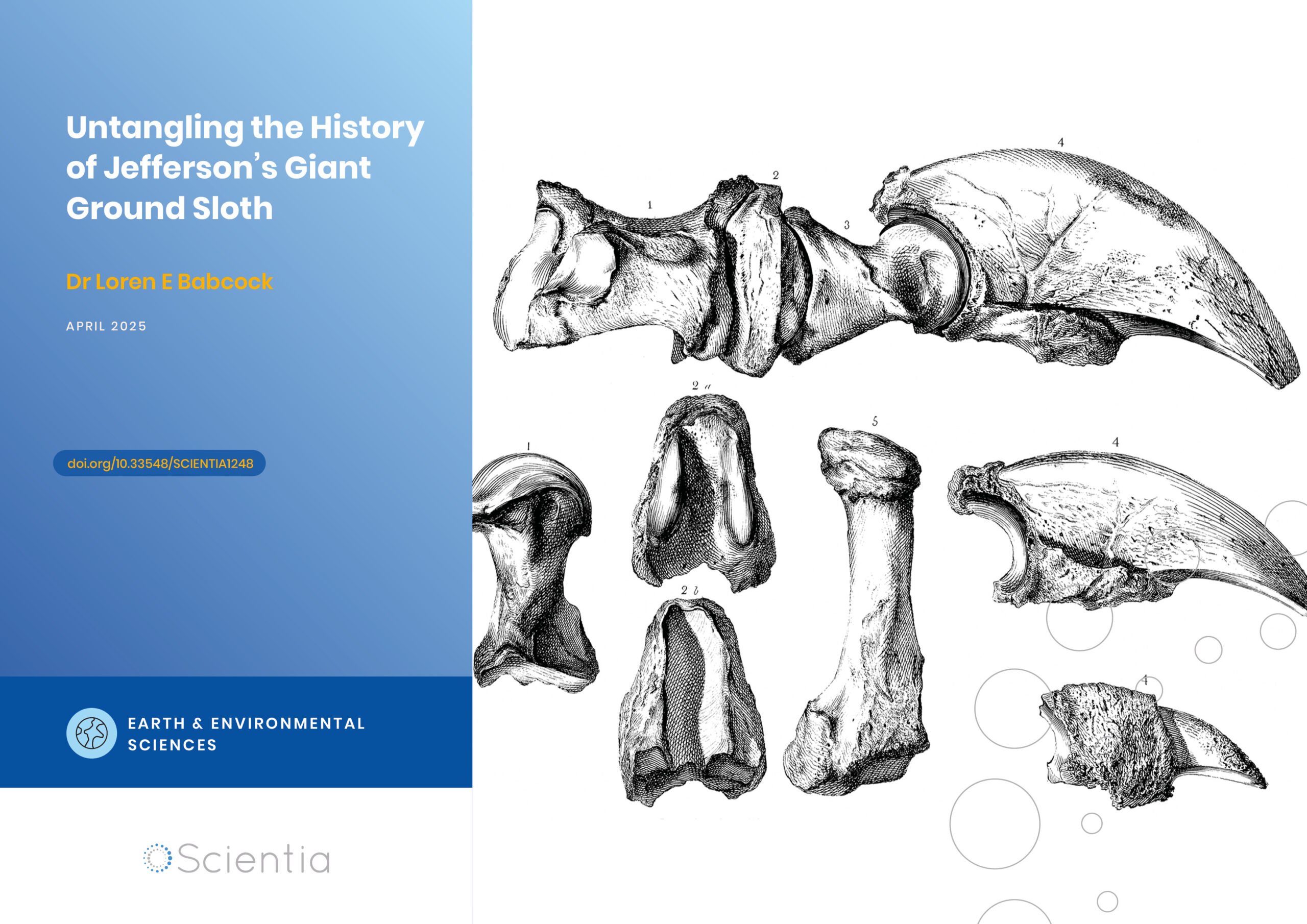Dr Kenneth Johnson – Fighting Fire Blight in Organic Orchards
The bacteria that causes fire blight in apple and pear trees is notoriously difficult to control without antibiotics. With new regulations in the US preventing antibiotic use in organic orchards after 2014, organic farmers faced an impossible choice – lose their organic certification or risk the death of their trees. Working against the clock, plant pathologist Dr Kenneth Johnson from Oregon State University accelerated his efforts to provide organic farmers with another option. With his team of researchers and outreach specialists, he developed and evaluated non-antibiotic management strategies for fire blight in organic apple and pear orchards.
An Organic Apple and Pear Production Crisis
Apples and pears are so loved the world over that some of the thousands of varieties have become household names. Whether it’s the crisp, refreshing flavour of a ‘Granny Smith’ apple, or the smooth sweetness of a ‘Bartlett’ pear, there is a flavour to suit every palate. And how different the world would be without warm apple pies, or a refreshing cider on a hot summer day.
Apple and pear cultivation is a huge global industry. In Europe, apples and pears are the most consumed fresh fruit, while in the US they are second only to bananas. In recent decades, consumer demand for organic produce has increased remarkably. In 2017, production of fresh organic apples and pears was worth around $600 million to western US growers and packers. In Washington State alone, 28,500 acres of apple and 3,200 acres of pear orchards are organic.
Unfortunately for apple and pear producers, insect pests, fungi and bacteria pose great threats to fruit production. Pests and diseases that damage the appearance of the fruit dramatically reduce their market value. This damage is relatively mild, however, in comparison to the damage wrought by diseases such as fire blight.

Caused by a pathogenic bacterium – Erwinia amylovora – fire blight ruins flowers and fruit before progressively killing off twigs, branches, and eventually the entire tree. Even small outbreaks of fire blight can incur large yield losses. For example, 10% fire blight infection that has spread to the roots of a four-year-old apple orchard can result in losses of around $12,000–15,000 per acre.
Antibiotics have been indispensable in controlling the devastating disease and have safeguarded the livelihoods of thousands of apple and pear producers in the process. The current production system for apples and pears was built on the high yields that were only possible with this effective tool against fire blight. Until recently, organic certified orchards were permitted to use antibiotic treatments to control fire blight. In 2012, however, the National Organic Standards Board voted to remove the antibiotics – oxytetracycline and streptomycin – from the National Organic Program’s list of allowable substances after 2014.
Organic producers’ options were limited. Varieties with resistance to fire blight were, and still are, years away from reaching producers. So, either these growers had to give up their organic certification – and lose their niche marketability – or they risked the disaster of a fire blight outbreak.
Fortunately, Dr Kenneth Johnson from the Department of Botany and Plant Pathology at Oregon State University had been investigating non-antibiotic control strategies for fire blight. Suddenly, however, he had a race against the clock to evaluate and share non-antibiotic fire blight control strategies with organic producers. Along with his team of researchers at Oregon State University and Washington State University, Dr Johnson refined a treatment regime against the fire blight bacteria using organic-permitted compounds and a yeast with biological control properties.

Classic ‘Shepard’s crook’ symptom of fire blight. CREDIT: Tianna DuPont, WSU.
Fire Blight Infections
The fire blight bacterium is native to eastern North America, but since the mid-1900s has spread to regions across the world. In western US, infections commonly occur in May and June on the second flush of flowers, but occasionally, infections can wreak havoc during the primary bloom.
Pears are especially susceptible to fire blight. Since fire blight spreads faster in warm, wet environments, the susceptibility of pears has limited their production to semi-arid regions. Although less susceptible than pears, apple production is at increasing risk of serious economic damage because of the high density of trees grown in intensive orchard systems and high consumer demand for fruit of susceptible varieties.
Examining the life cycle of fire blight provided Dr Johnson with the clues he needed to solve the problem of controlling the disease without antibiotics. The bacteria survive the winter months in diseased patches – called ‘cankers’ – under the tree bark. During humid periods in the spring, the bacteria begin to ooze out of the edges of cankers, attracting hungry insects that use this ooze as a food source – and consequently spread the disease. A single drop of canker ooze can contain between 100 million and one billion fire blight bacteria!
Insects and rain transfer the bacteria from old cankers to new flowers, where they multiply rapidly, and later between infested flowers. In wet weather, the bacteria are washed into the nectar-producing region of the flower, where they enter the tree’s vascular system. The bacteria move through the tree, killing tissues as the infection spreads. Twigs on infected trees develop a characteristic charred appearance – hence the name ‘fire blight’. Fire blight infections spread rapidly through young tissues, making young trees particularly vulnerable – and western US growers have been planting a lot of young apple trees.
The later-season secondary flush of flowers, common in some varieties of apple and pear, are at especially high risk of fire blight infection because warmer air temperatures promote bacterial growth, and fire blight pressure in the orchard is usually higher than earlier in the season. ‘Bartlett’ pear and ‘Pink Lady’ apple varieties, for example, often produce abundant secondary flowers. ‘Heat drives the build-up of the pathogen population on flowers, and moisture triggers the infection event,’ explains Dr Johnson.
‘Frequently, when a period of high temperature without rain occurs, new infections are limited to low areas in the orchard, where dew is more likely to occur. As few as two hours of wetting by dew is sufficient to trigger infection if the temperatures preceding the wetting event were favourable for pathogen growth,’ he says.

Ooze droplet of the fire blight pathogen. CREDIT: Tianna DuPont, WSU.
An Organic Solution
With no single non-antibiotic substance offering the same level of control of fire blight as antibiotics, Dr Johnson’s challenge was to evaluate the properties of each available alternative, determine the appropriate timing for application based on the disease life cycle, and develop an integrated and sequenced application protocol. His research revealed that organic producers must follow a season-long program that includes application of copper sprays, lime sulphur sprays, and ‘Blossom Protect’ – a treatment containing the yeast Aureobasidium pullulans. ‘By integrating multiple preventative materials, we are able to target the pathogen at each stage of its life cycle and gain overall better control,’ he says.
Conventional producers rely on weather and fire blight risk models to determine their antibiotic treatment regime from year to year. But because alternative treatments are not as effective, Dr Johnson recommends organic growers take a more risk-averse approach. ‘In organic programs, where biological materials are important components, spray applications based only on the model warnings will likely be too late to achieve effective control,’ he explains. ‘In order to be competitive, biologicals need to grow their populations on the flowers before fire blight pathogen cells arrive.’
Dr Johnson recommends treating each tree with Blossom Protect during the early blooming stages, to maximise the abundance of the beneficial yeast. Additionally, he suggests that organic growers extend their fire blight management programs longer than they may think is necessary. During some of his field trials in Oregon, he discovered an alarming increase in the number of fire blight bacteria after the flowers had already dropped all their petals. In just one week, the number of bacteria had increased from 200 cells to over one million cells in a single flower. Growers ceasing fire blight control measures too early could be risking a devastating surprise outbreak.
Various strains of the yeast Aureobasidium pullulans have been shown to be effective against fungal fruit rot diseases. However, only two known strains – those in Blossom Protect – are effective against fire blight. These two strains are remarkably superior to any other yeasts offering biological control properties against the bacteria. Interestingly though, Dr Johnson demonstrated that Blossom Protect did not prevent fire blight bacteria from multiplying on the flowers. Thus, the yeast prevents fire blight infection through another mechanism – which is still a mystery to scientists.

Russeting on Braeburn apple caused by Aureobasidium pullulans. CREDIT: Ken Johnson.
Blossom Protect was developed in Germany and was adopted in the western US shortly after, where it is used extensively. The treatment never gained widespread use in more humid Europe, however, owing to the yeast’s propensity to cause ‘russeting’ – the roughened, brown discolouration of apple and pear skins. Although russeting is cosmetic, the damage lowers the marketability of the fruit.
Russeting results when sprayed materials interact with moisture on the fruit surface in the month following flowering, and as such, late spring rains in northern Europe and the eastern US increases its frequency. In arid growing regions, such as central Washington, russeting caused by the yeast is rare. Growers in wetter regions, especially those growing more susceptible smooth-skinned pear varieties, may have to make a difficult decision about whether fire blight or russeting poses a greater risk.
Dr Johnson and his team have been sharing their non-antibiotic fire blight control strategy with organic growers through a series of webinars, publications, and presentations. They have shared their research at both national and international conferences. Future research could provide additional non-antibiotic substances to control fire blight, and ultimately, fire blight resistant varieties may become increasingly popular when they reach producers. But for now, Dr Johnson has provided effective tools for organic growers to maintain their apple and pear yields, retain their organic certification, and safeguard their livelihoods.
Reference
https://doi.org/10.33548/SCIENTIA633
Meet the researcher

Dr Kenneth B. Johnson
Department of Botany and Plant Pathology
Oregon State University
Corvallis, OR
USA
Dr Kenneth B. Johnson earned his PhD in Plant Pathology from the University of Minnesota. In 1988, he began his teaching and research career at Oregon State University, where he currently holds the position of Professor of Botany and Plant Pathology. His research focus is understanding how variability in environment and host and pathogen populations affect the development of plant disease. Dr Johnson’s research has contributed to the development of integrated disease control strategies of fruit and vegetable crops. He is committed to sharing his findings both nationally and internationally, presenting at multiple horticultural and agricultural meetings each year. In addition to his research, Dr Johnson lectures across a range of plant pathology modules, supervises research students, and has been an editor of multiple peer-reviewed journals.
CONTACT
E: Kenneth.Johnson@oregonstate.edu
W: https://scholar.google.com/citations?user=zqpYIIoAAAAJ&hl=en
KEY COLLABORATORS
Timothy Smith, David Granatstein and Tianna DuPont, Washington State University Extension Service
Rachel B. Elkins, University of California Agriculture and Natural Resources
Todd N. Temple, Oregon State University
FUNDING
US Department of Agriculture – National Institute of Food and Agriculture (USDA-NIFA)
Washington Tree Fruit Research Commission
USA Pear
FURTHER READING
TN Temple, EC Thompson, S Uppala, D Granatstein, KB Johnson, Floral Colonization Dynamics and Specificity of Aureobasidium pullulans Strains Used to Suppress Fire Blight of Pome Fruit, Plant disease, 2020, 104, 121. https://doi.org/10.1094/PDIS-09-18-1512-RE
KB Johnson, TN Temple, Evaluation of strategies for fire blight control in organic pome fruit without antibiotics, Plant disease, 2013, 97, 402. https://doi.org/10.1094/PDIS-07-12-0638-RE

Want to republish our articles?
We encourage all formats of sharing and republishing of our articles. Whether you want to host on your website, publication or blog, we welcome this. Find out more
Creative Commons Licence
(CC BY 4.0)
This work is licensed under a Creative Commons Attribution 4.0 International License. 
What does this mean?
Share: You can copy and redistribute the material in any medium or format
Adapt: You can change, and build upon the material for any purpose, even commercially.
Credit: You must give appropriate credit, provide a link to the license, and indicate if changes were made.
More articles you may like
Calculating Steering Friction: Essential Engineering for Military Aircraft Safety
The safe operation of military training aircraft depends on precise engineering calculations that most of us never consider. Dr Bogdan Adrian Nicolin and Dr Ilie Nicolin from the National Institute for Aerospace Research in Romania have developed sophisticated methods to calculate the steering friction moment in military aircraft. This critical engineering parameter ensures that pilots can safely control aircraft during taxiing, take-off, and landing – making their work essential for both pilot training and flight safety.
Professor Robert B Heimann | Culinary Craftmanship: The Evolution of Pottery for Cooking
Cooking food is arguably one of the most important transitions in human evolution, and initiated hundreds of thousands of years of refinement in both technique and technology. Professor Emeritus Robert B Heimann of TU Bergakademie Freiberg, Germany, recently reviewed the evidence for early cooking vessels and tracks the evolution of their production, identifying important strategies of optimisation using various natural materials, firing methods, and designs to improve durability, functionality, and efficiency over time.
Dr Loren Babcock | Untangling the History of Jefferson’s Giant Ground Sloth
In the spring of 1796, workers mining saltpetre in a western Virginia cave unearthed several unusual bones. This would launch the scientific study of extinct animals in North America and connect one of America’s founding fathers to the early development of palaeontology. Some of these mysterious bones eventually made their way to future US President Thomas Jefferson at his Monticello estate. Dr Loren Babcock from The Ohio State University’s School of Earth Sciences has conducted an extensive review of the complex naming history of this iconic extinct animal. His research untangles over 200 years of inconsistent scientific terminology and establishes the definitive nomenclatural history of what would become known as Megalonyx jeffersonii.
Epigenetic Mysteries Unravelled: The Zinc-Finger Proteins
Exploring the complex mechanisms of cell development processes and DNA structure is critical to understanding how certain diseases, such as cancer, can arise. Professor Danny Reinberg and Dr Havva Ortabozkoyun from the University of Miami in Florida, USA, work to reveal the epigenetic mechanisms at play during cell division and development and, in turn, disease processes. Together, they are discovering new protein molecules involved in genome organisation, deepening our understanding of how cancers and other related conditions can develop.




